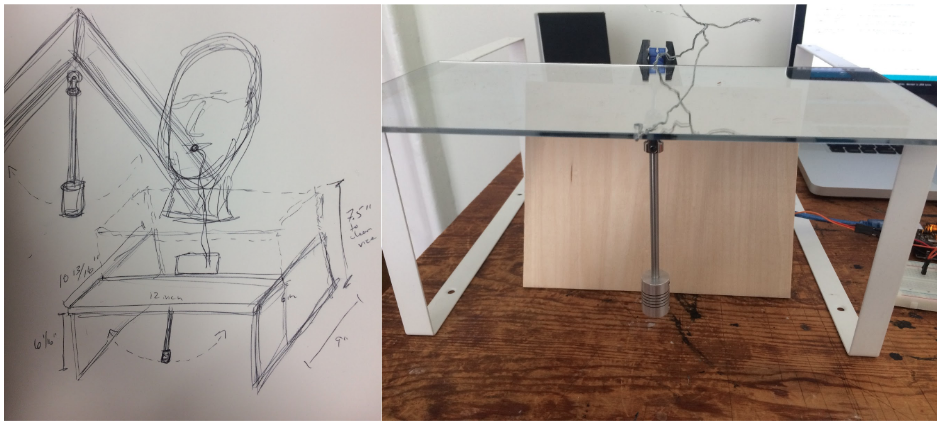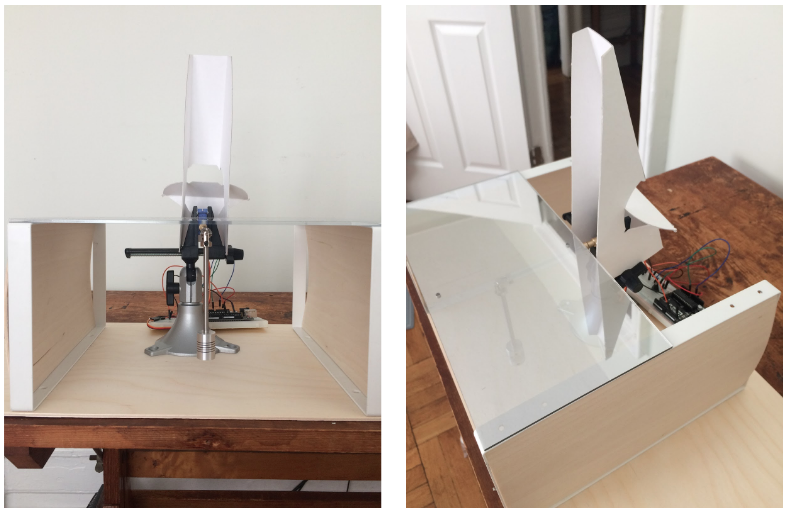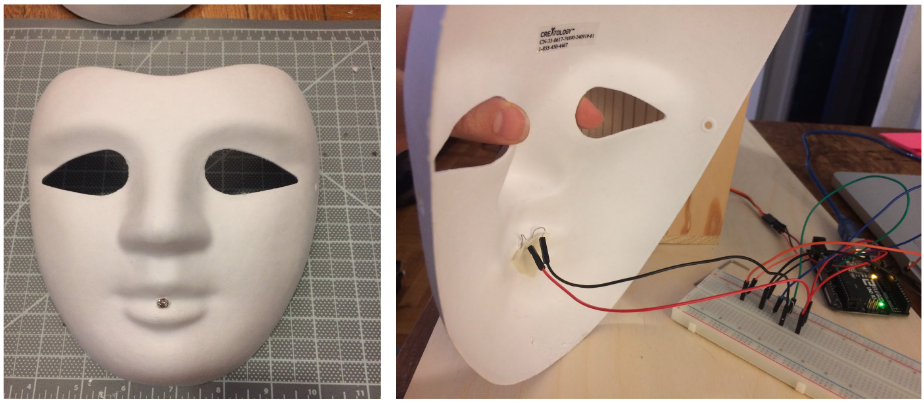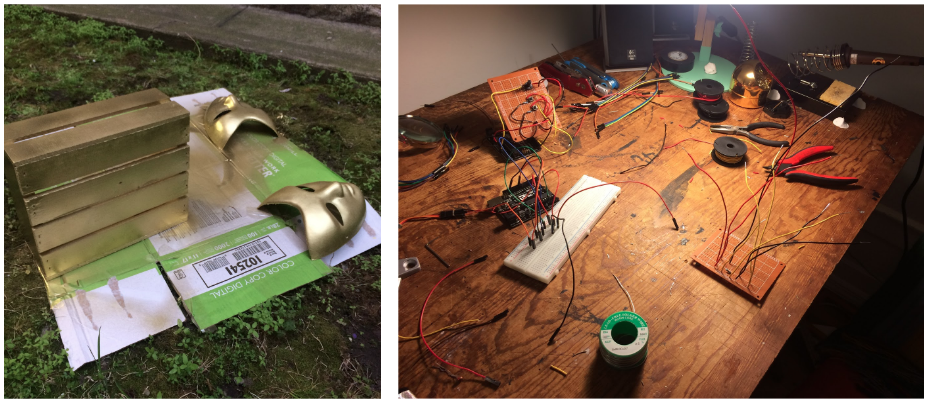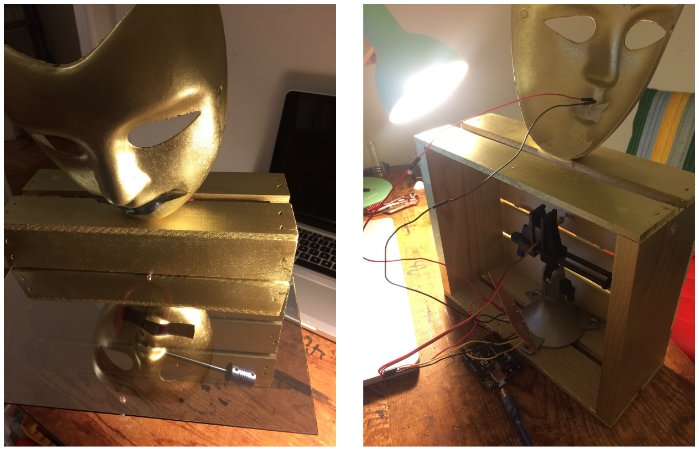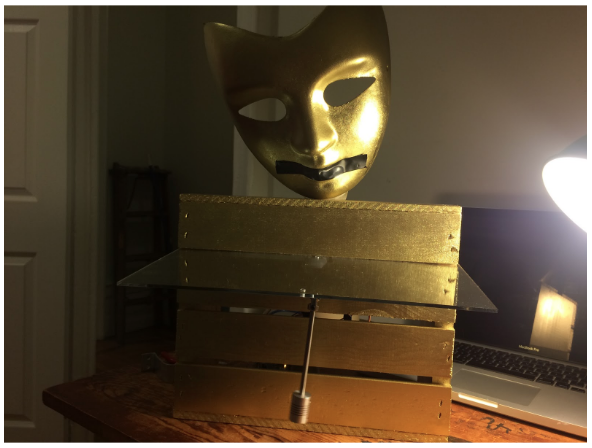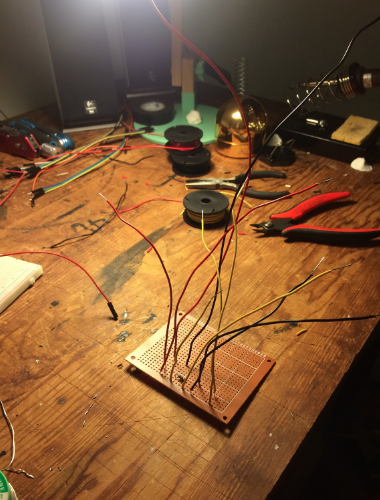Final: Time’s Up
Presentation: https://docs.google.com/presentation/d/1O3Tbw3HGmVE0klQ0oouqTND-hTB1slgr_E4iCs59kCk/edit?usp=sharing
Concept + Goals: With this project, I sought to create an interactive exhibit that complements the ‘Me Too’ and ‘Time’s Up’ movements. These were my guiding design questions:
How might I…
Make a physical object representative of the Time’s Up movement?
Use mechanical movement as a metaphor?
Convey the power of storytelling and the stranglehold of silence in relation to sexual harassment, assault, misconduct?
Allude to the oppression of silence and the glass ceiling?
Create a representation that has a universality to it?
Use human-impulse affordances to engage users?
Audience: I imagined this work to exist in a museum or convention hall. So the audience would be patrons seeking a particular exhibition-based experience. Dream iterations would be to scale up and have a long hall lined with these interactive storytelling boxes. I selected the audio clips from the TimesUpxStoryCorp campaign because of its focus on raw recorded storytelling, so in a way, the audience is that NPR sort of crowd, though it’d be great if this was seen and heard by a diverse range of people from the general public.
Precedents:
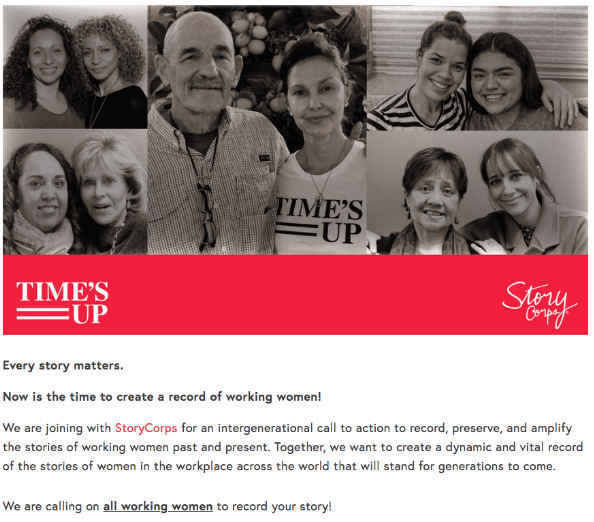
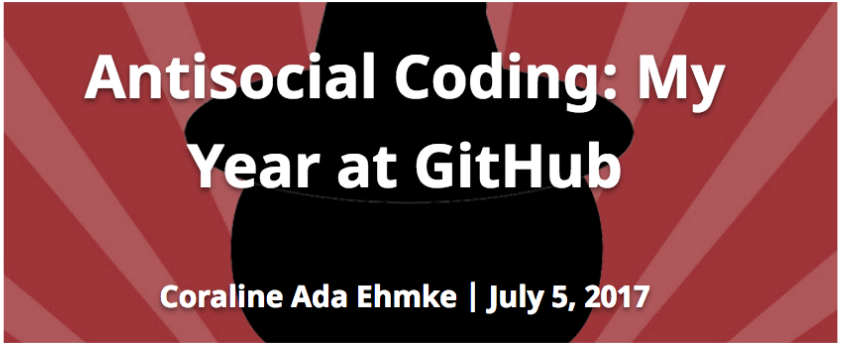 Corlaine Ada Ehmke’s candid blog post about the systemic insensitivity and bias at Github. I wanted to channel the bravery and power in telling your story, no matter how big the perpetrator is.
Corlaine Ada Ehmke’s candid blog post about the systemic insensitivity and bias at Github. I wanted to channel the bravery and power in telling your story, no matter how big the perpetrator is.
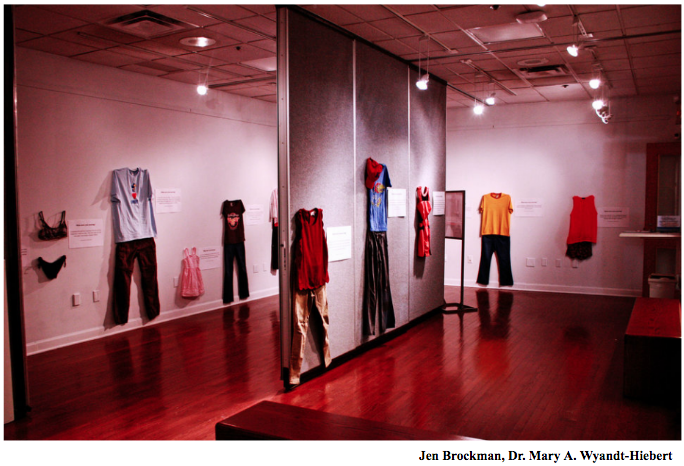 “What Were You Wearing?” is another example of the power in simplicity. This exhibit addresses sexual assault by shining a light on the age-old, disgusting question of “what were you wearing?” in response to a report of sexual assault.
“What Were You Wearing?” is another example of the power in simplicity. This exhibit addresses sexual assault by shining a light on the age-old, disgusting question of “what were you wearing?” in response to a report of sexual assault. 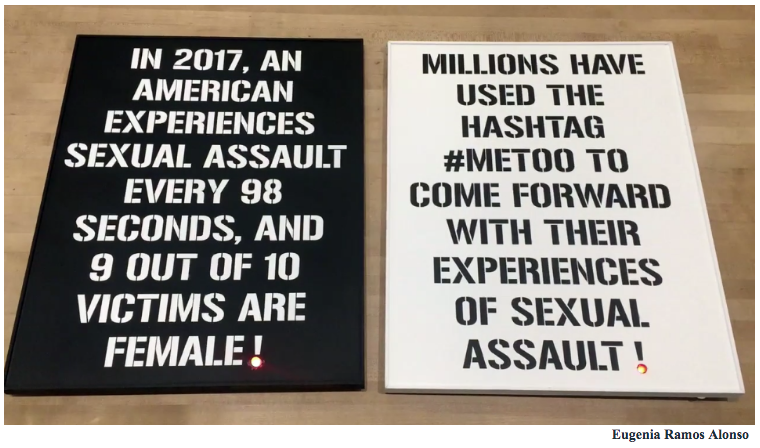
This is an example of a pcomp-based project addressing sexual assault and #metoo. Also simple, but clearly communicates the point using text and blinking LEDs.
Video Demo:
Project Description:
The power of the ‘Me Too’ and ‘Time’s Up’ movement lies in their storytelling: the more voices, the stronger the movement, which is notable for its outpouring of accounts previously bottled out of fear of retaliation. Those in power, the media, and the general public are finally listening to stories of sexual assault, misconduct, harassment, and believing them; responding with action. I wanted to capture the incredible power in the seemingly simple act of storytelling, but allude to the fact that this is only beginning to scratch the surface of social progress.
I designed the persona to be a generic mask to speak to the universality of victimhood. The style of the mask hints at the arts and drama, which is a reference to the women in film, media, and television who initiated ‘Time’s Up’. Gold seemed right for this reason, as well. There’s a sort of Oscar aesthetic intended to allude to Hollywood’s role in jumpstarting #metoo. I also wanted to give a sense of ‘all the glitters is not gold’: so many women put on a brave face every day, but swallow a damaging truth.
The mask starts with tape over its mouth, representing the oppression of silence. The servo motor powers the pendulum of silent oppression and unbalanced power, swinging back and forth, clicking the glass ceiling. When the tape is removed, the photocell is triggered, time’s up. The pendulum stops and we hear victims telling their stories via a Processing file.
Components: Servo motor (x1), motor shaft (x2), shaft coupler (x3), photocell (x1) (all materials available at Tinkersphere).
Circuit:
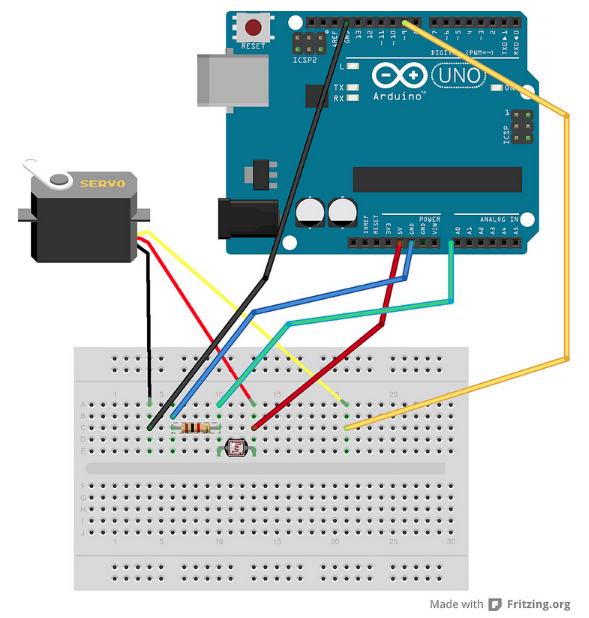
Schematic courtesy of Debbie Ding: http://openurbanism.blogspot.com/2013/08/simple-light-meter-arduino-servo.html
Process and Prototyping:
The circuit is simple, so the challenges came in the construction of the project and asking the right design questions to get the right design solutions.
I started with a more glass-ceiling-based concept, so I tried making glass with sugar. That proved impossible to break. Then I tried ice, which was too messy and impractical, though satisfying. I could imagine developing the ice approach down the road.
Once I had a rough sketch of the current design, I shopped around for different materials that would capture a simple but not cheap aesthetic.
Soldering my wires to a breadboard was the most frustrating part of the project, but I’m really glad I was pushed to do that. It got me over a psychological hump. I feel much more capable in my pcomp construction and understanding.
Future iterations: Scale up. Make hundreds of these, each with a different story to tell. Make it wireless.

